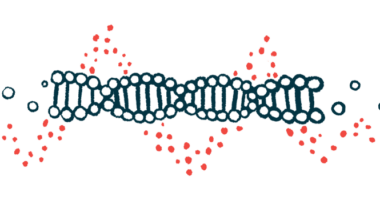9 Cases of Onpattro Used to Ease FAP Symptoms Described in Report

Several cases in which treatment with Onpattro (patisiran) was used to ease familial amyloid polyneuropathy (FAP) symptoms were described in a recent report from Italy.
The study, “Italian Real-Life Experience of Patients with Hereditary Transthyretin Amyloidosis Treated with Patisiran,” was published in Pharmacogenomics and Personalized Medicine.
FAP is caused by mutations in the TTR gene, leading to a misfolded version of a protein called transthyretin being produced, forming fibrils or clumps in body tissues and causing damage.
Onpattro is a RNA-based medicine widely approved to treat FAP. The medication is designed to lower transthyretin production by inactivating the messenger RNA molecule cells normally use as a template to make the protein.
In Italy, Alnylam Pharmaceuticals, which markets Onpattro, provided unconditional monetary support for publishing case reports describing patients with FAP, or other genetic diseases caused by misfolded transthyretin (termed ATTRv amyloidosis), who were treated with Onpattro. A group of researchers across Italy described nine such cases.
“This paper underlines the impact of [Onpattro] in nine patients affected by ATTRv amyloidosis from non-endemic areas in Italy,” the scientists wrote.
In the first case, a 69-year-old man sought medical attention for weakness in the limbs, which had been going on for about a year. He also had started experiencing unexplained pain, tingling, and digestive upset in the preceding months.
The man was initially suspected of having an inflammatory nerve disorder and was given medications to lower inflammation, but these did not resolve his symptoms. Eventually, genetic testing revealed he had a mutation in the TTR gene, ultimately leading to a diagnosis of FAP.
After he was diagnosed, the man started treatment with Onpattro, and has so far continued on the treatment without any safety issues. After treatment, several measures of symptom severity and life quality, including the COMPASS-31 and Norfolk QoL-DN, improved significantly. His walking ability, measured by the distance he could walk in six minutes, also improved markedly after being on Onpattro.
The other eight cases in the report generally followed similar patterns. Researchers noted that incorrect diagnoses leading to improper treatments were common, stressing the importance of genetic testing for people who show symptoms consistent with FAP.
In all cases, Onpattro helped ease disease symptoms. This was even true for people with relatively severe disease.
For example, one case described a 55-year-old man with a family history of ATTRv amyloidosis who was diagnosed after having unexplained diarrhea and weight loss. He initially was treated with tafamidis (sold as Vyndaqel, among other brand names), but then switched to Onpattro, along with other medications, after about a year since his condition was getting worse.
At the time he started treatment with Onpattro, his clinical condition was described as “severe.” He had chronic diarrhea, substantial weakness in all limbs, and was unable to undergo walking assessments due to severe dizziness. The patient had a “brilliant” response to Onpattro: after six months of treatment he had substantially less diarrhea and was able to walk unsupported.
“Today, [Onpattro] can be considered a valid therapeutic option for the management of patients with ATTRv amyloidosis and polyneuropathy and cardiovascular symptoms,” the researchers wrote.






